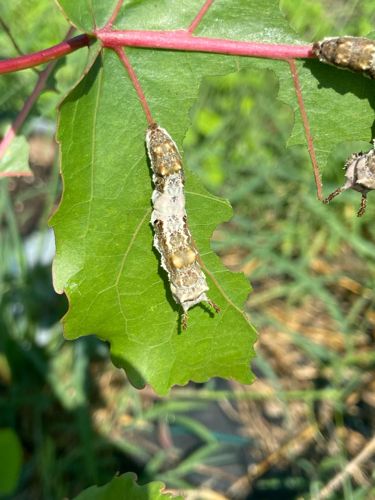Geometer Moth Caterpillar (Commonly known as Inchworm or Looper)
Scientific Name: Various species within the family Geometridae; specific identification to genus/species level from an image of the larva alone is difficult.
Order & Family: Order: Lepidoptera, Family: Geometridae
Size: Typically measures from 1 cm to 5 cm (0.4 to 2 inches) in length, depending on the species and instar. The caterpillar in the image appears to be in this range.

Natural Habitat
Found in diverse habitats where their host plants grow, including forests, woodlands, gardens, agricultural fields, and urban green spaces. They are typically found on the foliage of their host plants.
Diet & Feeding
Herbivorous. These caterpillars feed on the leaves, buds, and flowers of a wide variety of plants, including many trees, shrubs, and herbaceous plants. The specific diet varies greatly depending on the species of Geometer moth. The damage seen on the leaf in the image is consistent with caterpillar feeding.
Behavior Patterns
Geometrid larvae are known for their distinctive "looping" or "measuring" movement, where they bring their posterior prolegs up to their thoracic legs before extending forward. This is due to the reduction or absence of middle prolegs. They are often well-camouflaged, blending in with twigs, bark, or leaves, as seen in the image where its pattern resembles bark. Many species are nocturnal feeders, resting during the day.
Risks & Benefits
Potential risks include being significant defoliators of trees and other plants, especially during outbreaks, which can cause economic damage in forestry and agriculture. Some species are considered pests. Benefits include serving as a food source for birds and other insectivores, playing a role in nutrient cycling, and contributing to biodiversity. They are part of the complex food webs in their ecosystems.
Identified on: 8/9/2025